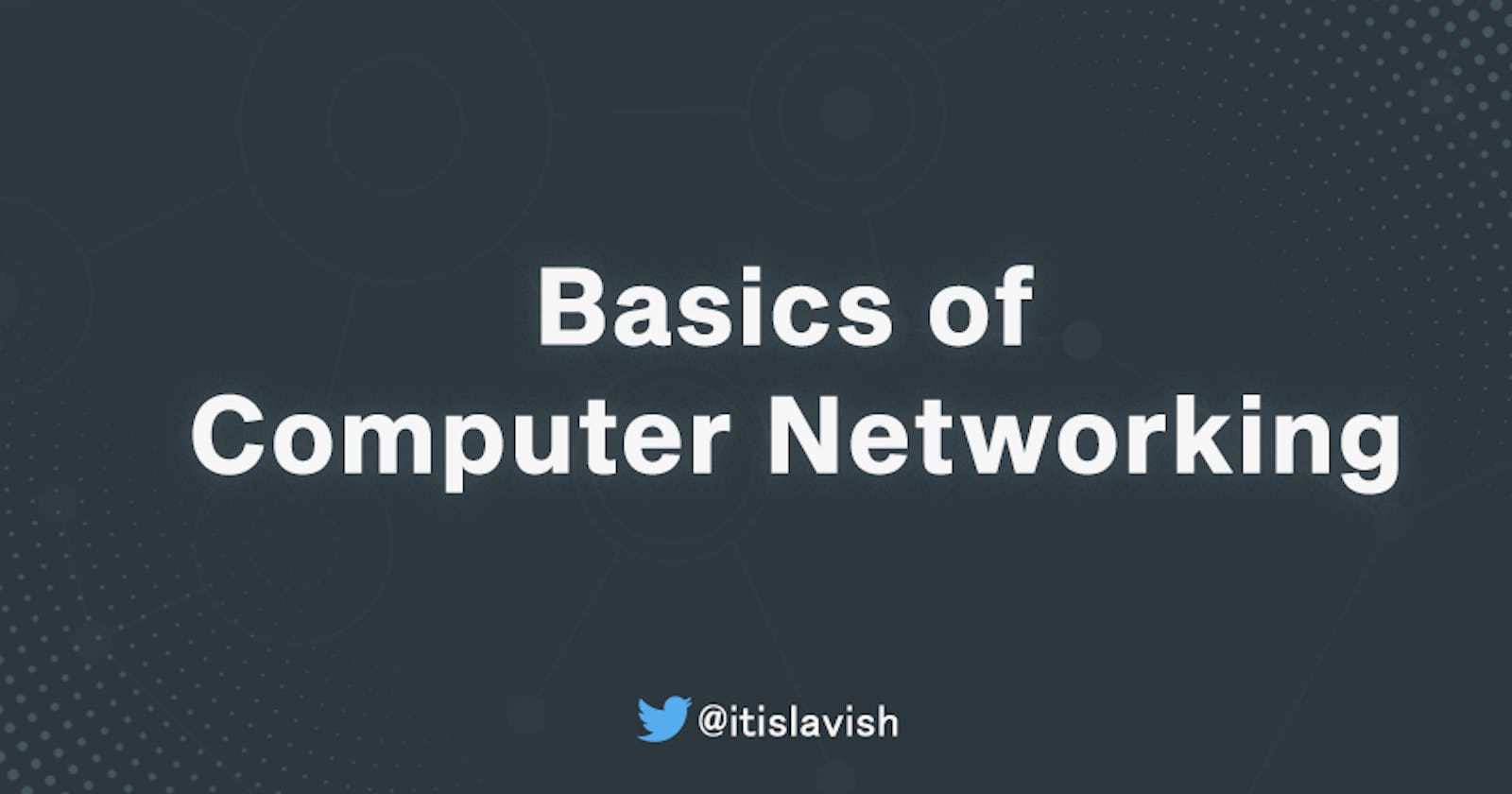Basics of Computer Networking
First Principles of Computer Networking and their Basic Understanding
Introduction
What is Computer Networking?
A computer network is a collection of interconnected computers and devices so as to exchange information or share resources. The largest network is Internet. The act of connecting computers to enable them to share resources is known as networking. The purpose of having computer network is to send and receive data stored in other devices over the network. These devices are often referred as nodes.
Benefits of Network
Computer network is very useful in modern environment. Some of these benefits of networks are discussed below
- File Sharing: Networking of computers helps the user to share data files.
- Software and Hardware Sharing: We can install the applications on the main server, therefore the user can access the application centrally. So we do not need to install the software on every machine. Similarly, hardware can also be shared.
- Application Sharing: Applications can be shared over the network and this allows implementation of client/server applications
- User Communication: This allows user to communicate using E-mails, news groups, video conferencing within the network.
- Access to Remote Database: This allows users to access remote database for example airline reservation database may be accessed for ticket booking.
Types of Networks
Based on the size and coverage area, networks are classified into the following types
Local Area Network (LAN)
In a LAN, a group of computers and other devices are connected over a relatively short distance. Generally, it is a privately owned networks within a single building or campus, upto a few kilometres in size. Users can share expensive devices, such as laser printers, as well as data on LAN and can also use the LAN to communicate with each other, by sending mails or engaging in chat sessions. Mostly, cables are used to connect the computers in LANs. However, there is also a limit on the number of computers that can be attached to a single LAN. Now-a-days, we also have WLAN (Wireless LAN) which is based on wireless network.
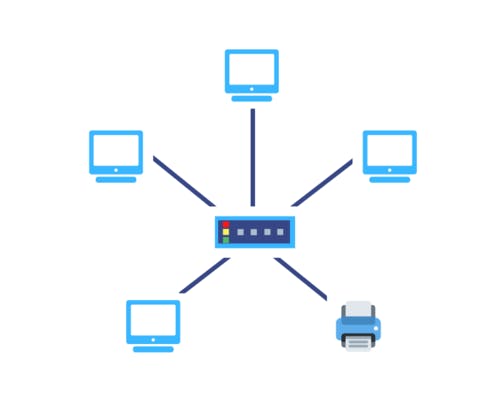
Wireless Local Area Network (WLAN)
WLAN stands for wireless local area network. As the name suggests, a WLAN forms a LAN by connecting devices using wireless communication, i.e. it doesn't rely on wired Ethernet connections. This means a lot less cabling is required and your mobile devices won’t need to be tethered, therefore, will be truly mobile. A WLAN can be either an alternative to a wired network or as an extension of it.
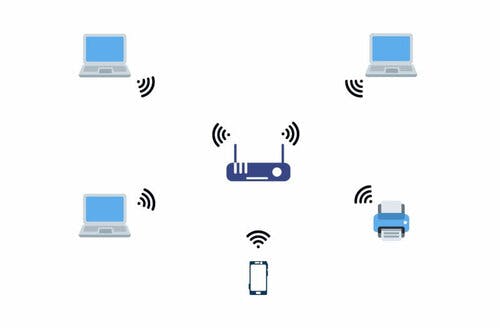
Metropolitan Area Network (MAN)
This is basically a bigger version of LAN and normally uses similar technology. It might cover few buildings in a city and might either be private or public. This is a network which spans a physical area (in the range of 5 km to 50 km) that is larger than a LAN but smaller than a WAN. MANs are usually characterized by very high-speed connections using optical fibers or other digital media and provides uplink services to Wide Area Networks (WANs) and the Internet. e.g. in a city, a MAN, which can support both data and voice might even be related to local cable television network. It is also frequently used to provide a shared connection to other networks using a link to a WAN.
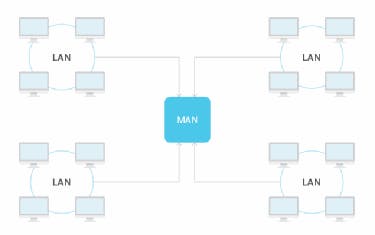
Wide Area Network (WAN)
WAN spans a large geographical area, often a country or a continent and uses various commercial and private communication lines to connect computers. Typically, a WAN combines multiple LANs that are geographically separated. Like the LAN, most WANs are not owned by any one organization, but rather exist under collective or distributed ownership and management. The world’s most popular WAN is the Internet.
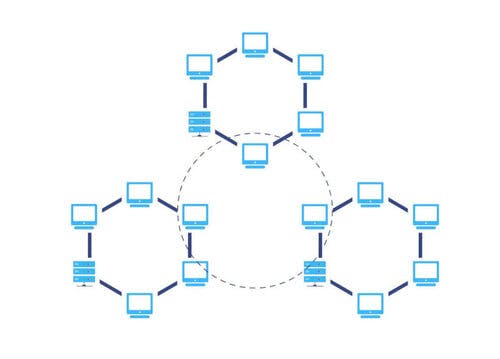
Personal Area Network (PAN)
PAN refers to a small network of communication. It is a computer network organized around an individual person. These networks typically involve a mobile computer, a cell phone and/or a handheld computing devices such as a PDA. Person can use these networks to transfer files including E-mail and calendar appointments, digital photos and music. These are used in a limited range, which is in the reachability of individual person. It generally covers a range of less than 10 metres and can be constructed with cables or wirelessly. Few examples of PAN are Bluetooth, Wireless USB, Z-Wave and Zigbee.
Virtual Private Network (VPN)
VPN is an encrypted connection over the Internet from a device to a network. It can be used to access region - restricted websites, shield your browsing activity from prying eyes on public Wi-Fi and more. It prevents unauthorized people from eavesdropping on the traffic and allows the user to conduct work remotely. VPN technology is widely used in corporate environments.
Network Devices
Hardware device that are used to connect computers, printers, fax machines and other electronic devices to a network are called network device. There are many types of network devices used in networking and some of them are described below:
Repeater
It is a hardware device, which is used to amplify the signals when they are transported over a long distance. The basic function of a repeater is to amplify the incoming signal and retransmit it, to the other device. Repeaters are mainly used for extending the range. If you want to connect two computers, which are more than 100 metres apart you need repeater.
Hub
A hub is a device, used with computer systems to connect several computers together. It acts as a centralised connection to several computers with the central node or server. It is a multi-port device, which provides access to computers. All incoming data packets received by the hub are sent to all hub ports and from them the data is sent to all the computers connected in a hub network. There are two types of hub, which are as follows (i) Active Hub It acts as repeaters. It amplifies the signal as it moves from one device to another. (ii) Passive Hub It simply passes the signal from one connected device to another.
Switch
A switch is a hardware device, which is used to connect devices or segments of the network into smaller subsets of LAN segments. The main purpose of segmenting is to prevent the traffic overloading in a network. Switch forwards a data packet to a specific route by establishing a temporary connection between the source and the destination. After the transmission or once the conversation is done, the connection is terminated. There is a vast difference between switch and hub. A hub forward each incoming packet (data) to all the hub ports, while a switch forwards each incoming packet to the specified recipient.
Gateway
A gateway is a device, which is used to connect dissimilar networks. The gateway establishes an intelligent connection between a local network and external networks, which are completely different in structure. The gateway is a node in a network, which serves as a proxy server and a firewall system and prevents the unauthorised access. It holds the information from a website temporarily, so that the repeated access to same website or web page could be directed to the proxy server instead of actual web server. Thus, it helps in reducing the traffic load.
Bridge
It serves a similar function as switches. A bridge filters data traffic at a network boundary. Bridges reduce the amount of traffic on a LAN by dividing it into two segments. Traditional bridges support one network boundary, whereas switches usually offer four or more hardware ports. Switches are sometimes called multi-port bridges.
Router
A router is used to connect different networks together. i.e. for two or more LANs to be interconnected, you need a router. It is a hardware device, which is designed to take incoming packets, analyze the packets, moving and converting the packets to another network interface, dropping the packets, directing packets to the appropriate locations, etc.
MODEM (MOdulator-DEModulator)
It is a device that converts digital signal to analog signal (modulator) at the sender’s site and converts back analog signal to digital signal (demodulator) at the receiver’s end, in order to make communication possible via telephone lines. It enables a computer to transmit data over telephone or cable lines. There are two types of MODEM, which are as follows (i) Internal Modem Fixed within a computer. (ii) External Modem Connected externally to a computer. When a network contains largest number of system/computer it needed modem.
Network Topologies
Bus Topology (Linear Topology)
A bus topology is an arrangement in which the computers and the peripheral devices are connected to a common single data line.
 A bus topology consists of a single cable, also called a bus, running from one end of the network to the other. In this network arrangement, each node is connected to the central cable or bus by interface connectors. A signal, containing the address and data, transmitted from the source node travels in both directions to all nodes until it reaches the destination node, which accepts the data. If the address of the delivered signal doesn’t match that of the receiving node, the data portion of the signal is ignored.
A bus topology consists of a single cable, also called a bus, running from one end of the network to the other. In this network arrangement, each node is connected to the central cable or bus by interface connectors. A signal, containing the address and data, transmitted from the source node travels in both directions to all nodes until it reaches the destination node, which accepts the data. If the address of the delivered signal doesn’t match that of the receiving node, the data portion of the signal is ignored.
Star Topology
In star topology, each communicating device is connected to a central node which is a networking device like a hub or a switch. The central node can be either a broadcasting device means data will be transmitted to all the nodes in the network or a unicast device means the node can identify the destination and forward data to that node only.
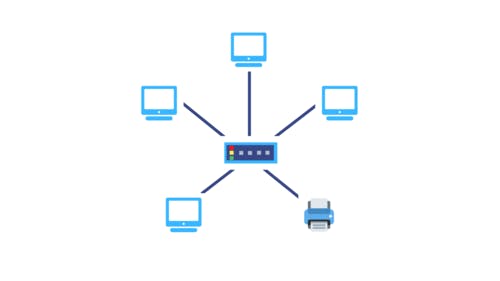
Tree Topology
A tree topology is an extension and variation of bus topology. Its basic structure is like an inverted tree, where the root acts as a server. In tree topology, the nodes are interlinked in the form of tree. If one node fails, then the node following that node gets detached from the main tree topology.
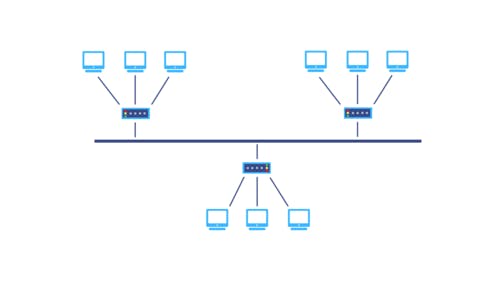
Mesh Topology
It is also known as completely interconnected topology. In mesh topology, every node has a dedicated point-to-point link to every other node. This topology is also more secure as compared to other topologies because each cable between two nodes carries different data.
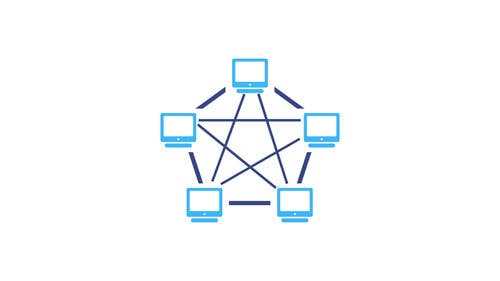
Ring Topology
A ring topology is defined as a network where every device has two neighbors for communication purposes. Every message and data package travels through a ring in a clockwise or counterclockwise direction.
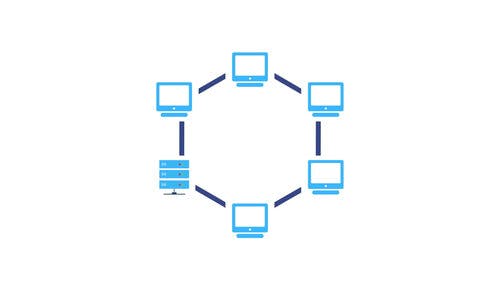
Conclusion and Feedback
The aforementioned data was about the Basic Understandings of Computer Networks and their Primary Principles (in-depth). Please feel free to comment about your suggestions, advices, clarifications about the blog and its data for the time ahead improvements. Also any type of endorsements for upcoming blog topics are much appreciated. Thank you very much for reading this blog.

